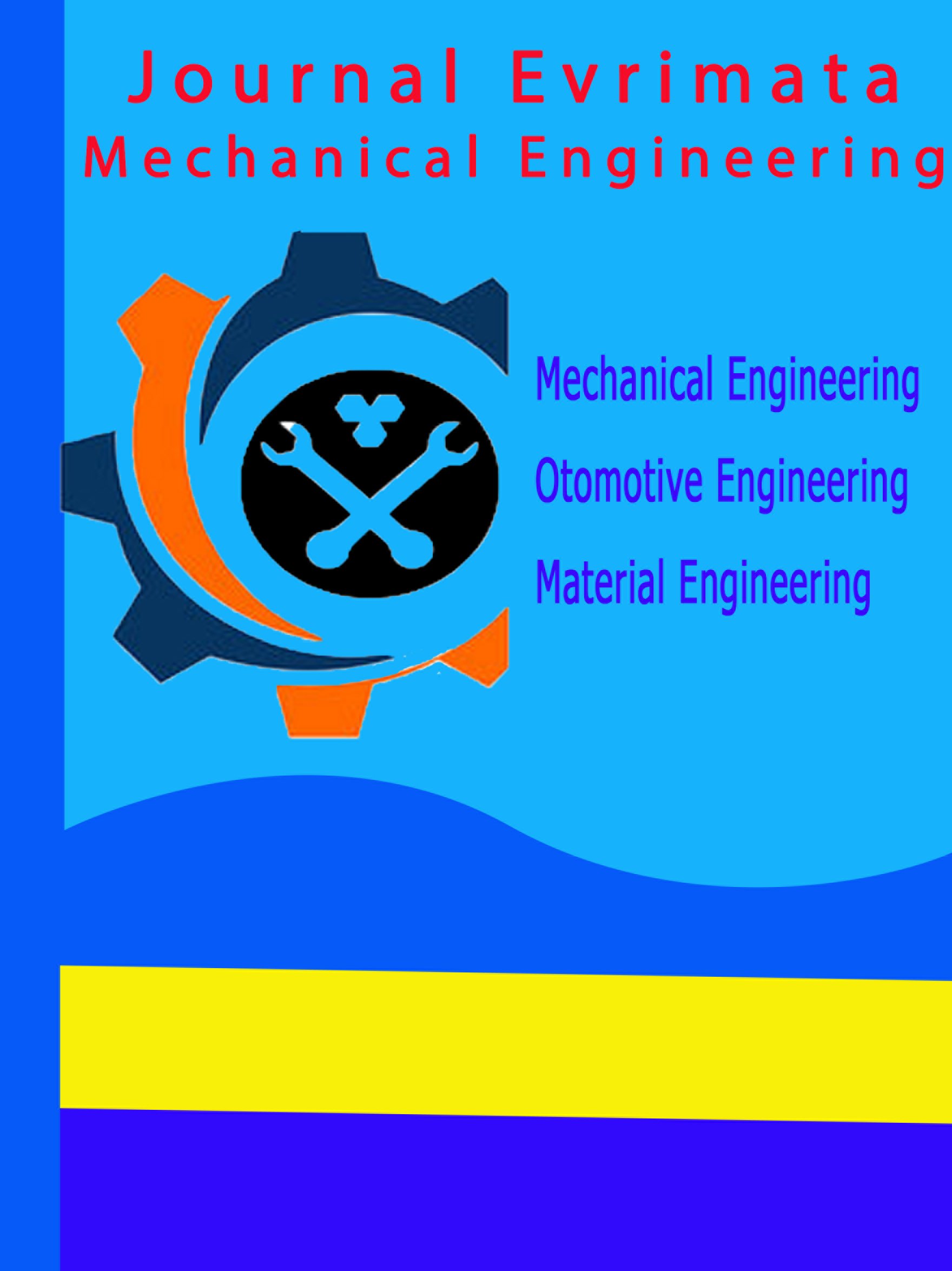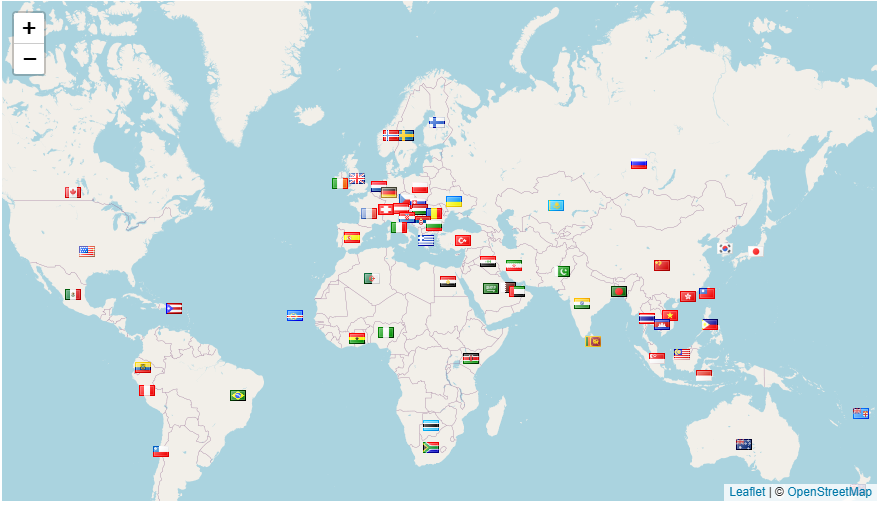The Effect of Different Octane Number on Power and Specific Fuel Consumption in Gasoline Compression Ignition Engine
DOI:
https://doi.org/10.70822/evrmata.vi.35Keywords:
Octane Number, Power, SFC, Compression Ignition, Engine Speed.Abstract
Internal combustion motors are a type of engine used as the main source of power for transportation equipment. This engine functions to convert heat energy into kinetic or motion energy. Compression ignition (CI) utilizes the increase in temperature and pressure during compression to ignite the fuel. The octane number or research octane number (RON) indicates the maximum pressure that can be received before gasoline burns itself. A lower octane number increases the likelihood of detonation of the fuel. Gasoline with a higher octane number is basically designed to prevent premature ignition or auto ignition of the gasoline in the engine. This research focuses on the power and specific fuel consumption of gasoline compression ignition engine at each variation in fuel octane number and engine speed. The fuel used is a mixture of 94% gasoline and 6% diesel fuel. The highest average power results at an engine speed of 1900rpm from 90, 92 and 95 octane fuel respectively are 0.475 kW, 0.728 kW and 0.764 kW. The average results of specific fuel consumption at 1900 engine revolutions were obtained for fuel with octane numbers of 90, 92, and 95 respectively at 0.92 L/kWh, 0.91 L/kWh, and 0.65 L/kWh.
References
L. Tipanluisa, N. Fonseca-González, N. Flores, and A. Ayala, “Butanol and selective catalytic reduction of gaseous emissions in a heavy-duty diesel engine,” Fuel, vol. 373, p. 132236, Oct. 2024, doi: 10.1016/j.fuel.2024.132236.
A. García, J. Monsalve-Serrano, D. Villalta, and R. Sari, “Octane number influence on combustion and performance parameters in a Dual-Mode Dual-Fuel engine,” Fuel, vol. 258, p. 116140, Dec. 2019, doi: 10.1016/j.fuel.2019.116140.
N. Athafah and A. Salih, “Effect of Octane Number on Performance and Exhaust Emissions of an SI Engine,” Engineering and Technology Journal, vol. 38, no. 4A, pp. 574–585, Apr. 2020, doi: 10.30684/etj.v38i4A.263.
J. K. Siaw Paw et al., “Advancing renewable fuel integration: A comprehensive response surface methodology approach for internal combustion engine performance and emissions optimization,” Heliyon, vol. 9, no. 11. Elsevier Ltd, Nov. 01, 2023. doi: 10.1016/j.heliyon.2023.e22238.
E. E. Onojowho, E. Betiku, and A. A. Asere, “Performance and CO2 emission of a single cylinder compression ignition engine powered by Khaya senegalensis non-edible seeds fuel blends,” Heliyon, vol. 10, no. 7, Apr. 2024, doi: 10.1016/j.heliyon.2024.e28380.
R. A. Prahmana et al., “The influence of acetylene black microparticles as a fuel additive in pure palm oil and its performance characteristic on diesel engine,” Results in Engineering, vol. 23, Sep. 2024, doi: 10.1016/j.rineng.2024.102390.
M. Zheng, M. C. Mulenga, G. T. Reader, M. Wang, D. S. K. Ting, and J. Tjong, “Biodiesel engine performance and emissions in low temperature combustion,” Fuel, vol. 87, no. 6, pp. 714–722, May 2008, doi: 10.1016/j.fuel.2007.05.039.
E. Singh, J. Badra, M. Mehl, and S. M. Sarathy, “Chemical Kinetic Insights into the Octane Number and Octane Sensitivity of Gasoline Surrogate Mixtures,” Energy and Fuels, vol. 31, no. 2, pp. 1945–1960, Feb. 2017, doi: 10.1021/acs.energyfuels.6b02659.
A. Prakash, C. Wang, A. Janssen, A. Aradi, and R. Cracknell, “Impact of Fuel Sensitivity (RON-MON) on Engine Efficiency,” SAE Int J Fuels Lubr, vol. 10, no. 1, pp. 2017-01–0799, Mar. 2017, doi: 10.4271/2017-01-0799.
P. P. Brancaleoni, E. Corti, V. Ravaglioli, D. Moro, and G. Silvagni, “Innovative torque-based control strategy for hydrogen internal combustion engine,” Int J Hydrogen Energy, vol. 73, pp. 203–220, Jul. 2024, doi: 10.1016/j.ijhydene.2024.05.481.
S. Brusca, A. Galvagno, R. Lanzafame, S. Mauro, and M. Messina, “Fuels with low octane number: water injection as knock control method,” Heliyon, vol. 5, no. 2, p. e01259, Feb. 2019, doi: 10.1016/j.heliyon.2019.e01259.
J. P. Szybist and D. A. Splitter, “Pressure and temperature effects on fuels with varying octane sensitivity at high load in SI engines,” Combust Flame, vol. 177, pp. 49–66, 2017, doi: 10.1016/j.combustflame.2016.12.002.
S. Schlichting, T. Methling, P. Oßwald, J. Zinsmeister, U. Riedel, and M. Köhler, “Numerical prediction of research octane numbers via a quasi-dimensional two-zone cylinder model,” Applications in Energy and Combustion Science, vol. 11, Sep. 2022, doi: 10.1016/j.jaecs.2022.100079.
Y. Yang, N. Gong, K. Xie, and Q. Liu, “Predicting Gasoline Vehicle Fuel Consumption in Energy and Environmental Impact Based on Machine Learning and Multidimensional Big Data,” Energies (Basel), vol. 15, no. 5, p. 1602, Feb. 2022, doi: 10.3390/en15051602.
C. Windarto and O. Lim, “A neural network approach on forecasting spark duration effect on in-cylinder performance of a large bore compression ignition engine fueled with propane direct injection,” Fuel Processing Technology, vol. 257, Jun. 2024, doi: 10.1016/j.fuproc.2024.108088.
J. Rodríguez-Fernández, Á. Ramos, J. Barba, D. Cárdenas, and J. Delgado, “Improving Fuel Economy and Engine Performance through Gasoline Fuel Octane Rating,” Energies (Basel), vol. 13, no. 13, p. 3499, Jul. 2020, doi: 10.3390/en13133499.
A. K. Rashid, M. R. Abu Mansor, A. Racovitza, and R. Chiriac, “Combustion characteristics of various octane rating fuels for automotive thermal engines efficiency requirements,” in Energy Procedia, Elsevier Ltd, 2019, pp. 763–772. doi: 10.1016/j.egypro.2018.11.242.
B. Rahmat and M. B. R. Wijaya, “Performance comparison of one cylinder combustion engine with variations of compression pressure & octane number gasoline,” SINTEK JURNAL: Jurnal Ilmiah Teknik Mesin, vol. 17, no. 1, p. 31, Jun. 2023, doi: 10.24853/sintek.17.1.31-37.
S. Kurniawan and D. Pebrianti, “Optimization Study of the Ratio of Bioethanol Bioaceton Ron 90 on the Power and Emissions of a 110cc Gasoline Motor,” Asian Journal Science and Engineering, vol. 2, no. 1, p. 22, Sep. 2023, doi: 10.51278/ajse.v2i1.759.
S. Mondal, M. H. R. Sabbir, M. R. Islam, M. F. Ferdous, M. M. Hassan Mondol, and M. J. Hossain, “Qualitative assessment of regular and premium gasoline available in Bangladesh markets,” Heliyon, vol. 10, no. 7, Apr. 2024, doi: 10.1016/j.heliyon.2024.e29089.
Y. Qian, H. Wu, S. Mi, W. Zhao, D. Zhou, and X. Lu, “High-efficiency combustion of gasoline compression ignition (GCI) mode with medium-pressure injection of low-octane gasoline under wide engine load conditions,” Applications in Energy and Combustion Science, vol. 15, Sep. 2023, doi: 10.1016/j.jaecs.2023.100179.
M. Usman, A. Naveed, S. Saqib, J. Hussain, and M. K. Tariq, “Comparative assessment of lube oil, emission and performance of SI engine fueled with two different grades octane numbers,” Journal of the Chinese Institute of Engineers, Transactions of the Chinese Institute of Engineers,Series A, vol. 43, no. 8, pp. 734–741, 2020, doi: 10.1080/02533839.2020.1777205.
A. García, J. Monsalve-Serrano, D. Villalta, and R. Sari, “Octane number influence on combustion and performance parameters in a Dual-Mode Dual-Fuel engine,” Fuel, vol. 258, Dec. 2019, doi: 10.1016/j.fuel.2019.116140.
C. Wibowo, F. Adian, Y. Nugroho, and B. Sugiarto, “The optimization of the relationship between octane number of gasoline-ethanol blend fuels in various settings of the engine control module,” Evergreen, vol. 7, no. 4, pp. 587–592, Dec. 2020, doi: 10.5109/4150510.
Musyaroh, W. Wijayanti, M. Nur Sasongko, and Winarto, “The effects of limonene and eugenol additives in n-heptane and low-octane gasoline on the emission characteristics and fuel consumption of single-cylinder gasoline engine,” Engineering Science and Technology, an International Journal, vol. 51, Mar. 2024, doi: 10.1016/j.jestch.2024.101648.
S. Santoso, F. A. Yulianto, E. Yudiyanto, C. Aditya, and S. Sabarudin, “The Effect of Fuel Pump Pressure and Number of Injector Holes on 150cc Matic Motorcycle Performance,” Asian Journal Science and Engineering, vol. 2, no. 2, p. 117, Jan. 2024, doi: 10.51278/ajse.v2i2.1020.
A. Nugraha and S. Orhani, “The Effect of Strong Magnetic Field and Engine Rotation on Fuel Consumption and Exhaust Gas Emissions for Gasoline Engines,” Asian Journal Science and Engineering, vol. 1, no. 1, p. 1, Jun. 2022, doi: 10.51278/ajse.v1i1.394.
L. V. Amaral, A. C. Teixeira Malaquias, M. A. Fraga, R. B. Torres, R. C. O. Sebastião, and F. J. P. Pujatti, “Combustion and specific fuel consumption evaluation of a single-cylinder engine fueled with ethanol, gasoline, and a hydrogen-rich mixture,” Case Studies in Thermal Engineering, vol. 57, p. 104316, May 2024, doi: 10.1016/j.csite.2024.104316.
M. Prashanth and V. S. Rao, “The impact of soret, Dufour, and chemical reaction on MHD nanofluid over a stretching sheet,” Partial Differential Equations in Applied Mathematics, vol. 10, p. 100674, Jun. 2024, doi: 10.1016/j.padiff.2024.100674.
B. D. Cahyo and B. Irawan, “Manufacture and Analysis Performance of Injection Device System 4 Stroke Engine Againts Emissions,” Asian Journal Science and Engineering, vol. 2, no. 2, p. 101, Apr. 2024, doi: 10.51278/ajse.v2i2.963.
K. Cung et al., “Gasoline compression ignition (GCI) combustion of pump-grade gasoline fuel under high compression ratio diesel engine,” Transportation Engineering, vol. 4, p. 100066, Jun. 2021, doi: 10.1016/j.treng.2021.100066.






